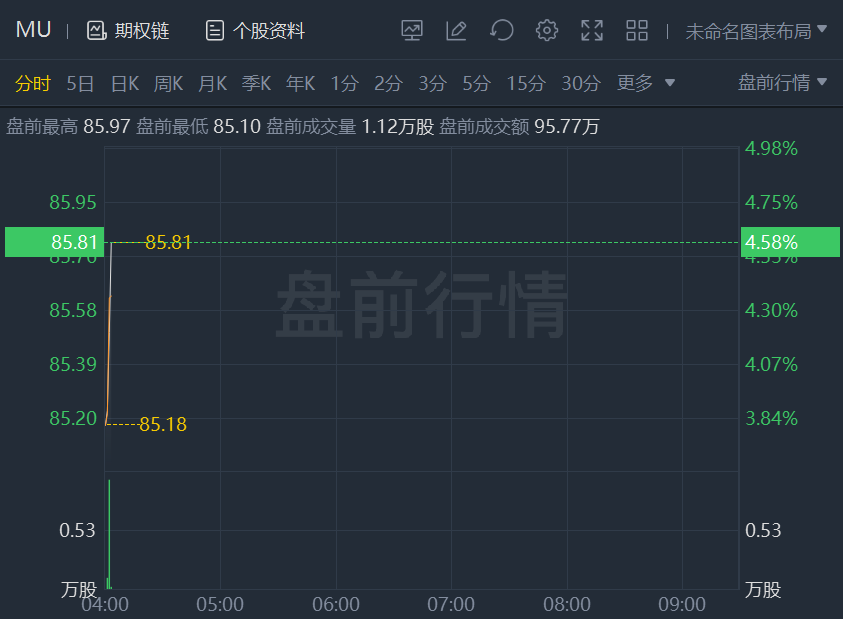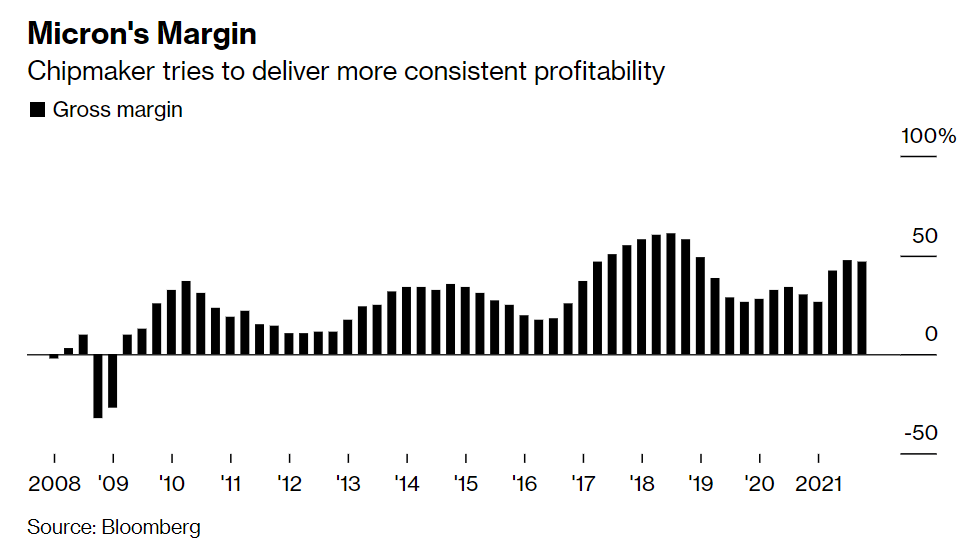Micron Technology Inc., the largest U.S. maker of memory chips, gave an upbeat forecast for the current quarter, a sign that demand remains strong from rapidly expanding data-center customers.
Sales will be about $8.7 billion in its fiscal third quarter, Micron said Tuesday in a statement. That compares with an average analyst estimate of $8.2 billion, according to data compiled by Bloomberg. Excluding certain items, profit will be about $2.46 a share, topping the $2.24 prediction.
Memory chips are now used in a wide range of devices, making them less subject to fluctuations in demand for personal computers and smartphones. That’s helped Micron continue to grow even as the PC market slows.
Data-center sales have been a particular bright spot,surgingmore than 60% last quarter. Industrial sales also gained about 60% in the period, and automaker revenue set a record. While the number of PCs and smartphones being shipped isn’t growing, the amount of memory those devices need is, according to Chief Executive Officer Sanjay Mehrotra.
“Micron is looking at a record year in fiscal 2022,” he said in an interview. “Our end market demand is strong, our customers’ demand is strong and supply is constrained.”
Micron’s shares rose as much as 4% in premarket trading Wednesday following the report. They had lost 12% this year through Tuesday’s close, part of a broader tech slump. The Philadelphia Stock Exchange Semiconductor Index has lost 8.1% this year.
In the three months ended March 3, Micron’s revenue grew 25% to $7.79 billion. Net income was $2.26 billion, or $2 a share, up from $603 million, or 53 cents, a year earlier.
Micron competes with South Korea’s Samsung Electronics Co. and SK Hynix Inc., as well as Japan’s Kioxia Holdings Corp.
DRAM chips hold information temporarily, helping processors crunch data. Nand flash memory, meanwhile, acts as permanent storage in phones and computers. Recent production problems at Kioxia plants caused some of its products to be unusable, helping boost prices of Nand semiconductors. Samsung dominates production of both major types of chips.
Historically, the PC market has driven demand for memory. That industry enjoyed a surge during the pandemic, fueled in part by stuck-at-home workers buying new equipment. But it has slowed more recently. Micron said Tuesday that it expects PC shipments to be flat this year compared with 2021.
The Ukraine war won’t affect Micron’s production, but the region’s role as a source of gases and some minerals used in chip manufacturing means that some costs may go up, the company said. The return of lockdowns in China related to the Covid-19 pandemic represent a risk to the electronics supply chain, according to Mehrotra. As with many companies, the price of energy, transport, raw materials and wages are going up, he said.
Micron is able to offset this inflationary pressure by improving its production techniques to make itself more efficient. It’s doing that faster than its competitors, he said.


